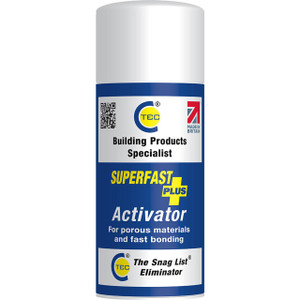Fixings & Adhesives
Our tested selection of adhesives and sealants provide reliable bonding for wall panels and related installations. Choose from water-based, solvent-free, and hybrid polymer options designed specifically for PVC, MDF, and timber panelling applications.
These adhesives offer high grab, flexibility, and quick drying properties essential for successful panel installations in both dry and wet environments.
Choosing the Right Adhesive
Different panel materials need specific adhesive types. PVC panels require flexible adhesives that handle thermal expansion, while MDF panels work best with water-based options that won't cause warping.
The wall surface also affects adhesive choice. Smooth surfaces like painted walls or tiles need high-grab formulations, while rough or porous surfaces may require different approaches for reliable bonding.
Environmental conditions matter too. Bathroom installations need moisture-resistant adhesives, while standard rooms allow more adhesive options.
Our Adhesive Range
Demsun A30 Adhesive - Water-based formula specifically designed for PVC and MDF panels. Offers high initial grab with flexibility after curing. Dries to touch in 30-40 minutes under normal conditions.
Demsun A32 Express - Fast-setting option for quick installations. Provides strong initial tack and rapid curing, ideal for time-sensitive projects where you can't wait for standard drying times.
Demsun MS High Tack - Heavy-duty adhesive for challenging installations. Super strong initial grip eliminates need for temporary supports or clamps. Good for large or heavy panels.
CT1 Sealant & Adhesive - Hybrid polymer that works as both adhesive and sealant. Bonds to almost any surface and remains paintable after curing. Excellent weather and UV resistance.
Application Guidelines
Wall preparation is crucial for reliable bonding. Surfaces must be clean, dry, and free from dust, grease, or loose material. Very porous surfaces may need priming before adhesive application.
Apply adhesive in vertical strips across the panel back, focusing on edges and centre areas. For large panels, use a grid pattern to ensure even distribution and prevent air pockets.
Work in sections you can complete within the adhesive's open time. Most panel adhesives remain workable for 10-15 minutes after application, allowing time for positioning and adjustment.
Use temporary supports where needed. Panel pins or masking tape can hold panels in position while adhesive cures, particularly important for ceiling applications or smooth wall surfaces.
Panel-Specific Recommendations
PVC Panels - Use Demsun A30 for standard installations. Its flexibility handles thermal movement without bond failure. For challenging surfaces, consider CT1 for its superior bonding properties.
MDF Panels and Strips - Water-based adhesives like A30 prevent moisture absorption that could cause panel expansion. Avoid solvent-based options that might affect MDF stability.
Heavy or Large Panels - Demsun MS High Tack provides immediate strong grip, eliminating slippage during installation. Particularly useful for ceiling applications or oversized panels.
Wet Area Applications - Choose moisture-resistant formulations and ensure complete sealing around panel edges. CT1 works well where both adhesion and sealing are needed.
Drying Times and Conditions
Temperature and humidity significantly affect curing times. Adhesives cure slower in cold or very humid conditions, faster in warm, dry environments.
Most adhesives are touch-dry within 30-60 minutes but need 24 hours for full strength. Avoid disturbing panels during initial cure, particularly in the first few hours.
For bathroom installations, ensure good ventilation and allow full curing before exposing to moisture. This prevents bond failure and ensures long-term waterproofing.
Cold weather installations may need heating to maintain proper curing conditions. Very hot weather might require working in smaller sections to prevent adhesive skinning before panel placement.
Troubleshooting Common Issues
Poor Initial Grab - Usually caused by dusty or greasy surfaces. Clean thoroughly and allow to dry completely. Consider high-tack formulations for smooth surfaces.
Panel Slippage - Use temporary supports until adhesive develops strength. Panel pins driven at slight angles provide discrete holding power without affecting finish.
Incomplete Bonding - Often results from insufficient adhesive or uneven application. Ensure full coverage, particularly at panel edges where stress concentrates.
Flexibility Issues - Rigid adhesives may crack with thermal movement. Choose flexible formulations for PVC panels or installations subject to temperature variation.
Storage and Handling
Store adhesives in cool, dry conditions away from freezing temperatures. Most cartridge adhesives have 12-month shelf life when properly stored.
Check cartridge tips before use - dried adhesive can block application. Pierce sealed cartridges carefully and ensure even flow before starting installation.
Dispose of empty cartridges responsibly. Most construction adhesives are not classified as hazardous waste but check local disposal guidelines.
Keep spare cartridges for touch-ups and repairs. Panel installations may need adjustments or additions later, and having matching adhesive simplifies the process.












